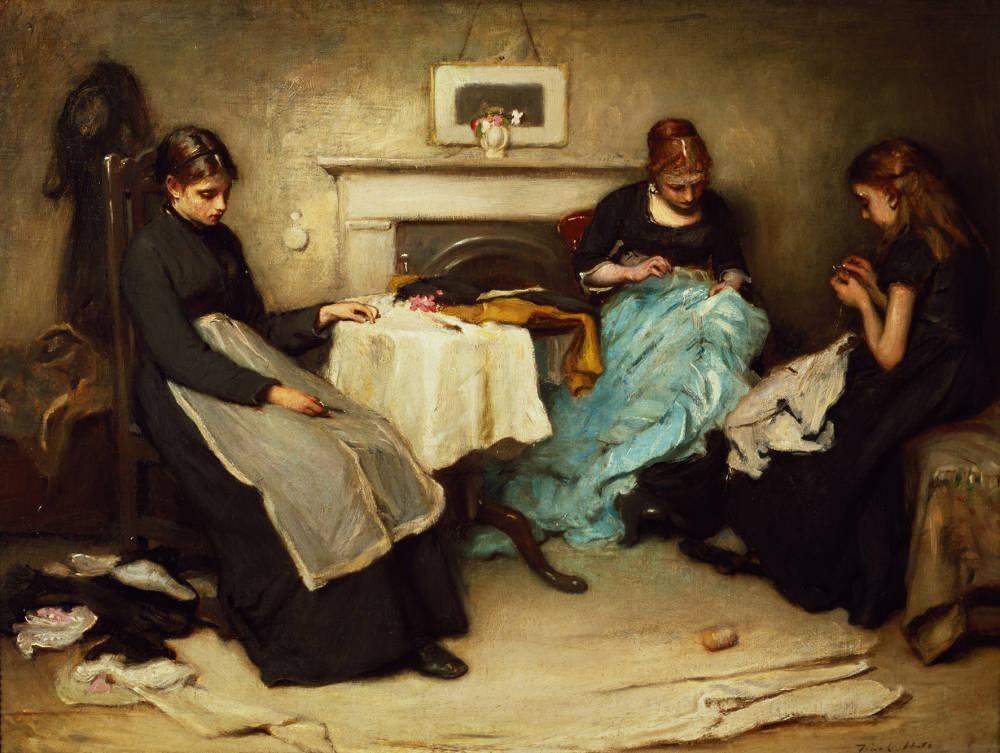Created by Mardi Jensen on Mon, 11/30/2020 - 23:47
Description:
An increasing number of women (mostly unmarried or widowed) found themselves in need of work to support themselves or thier families. While being a governess was an appropriet profession for women, not all women had the education that would have been required. Needlework however was a skill almost every women had. It became common practice for women in the middle (and sometimes upper) class to do needlework. Millinery, or hat making, and dressmaking were the more respectible positions, usually for women with wealthier families. Many of them were apprenticed if thier families could afford it, learning and working in an actual shop.
As fashion trends in the 1830s and 1840s moved away from tailored items, there was a higher demand for ready made clothing. Tailoring had become too expensive for the growing middle class, but women could be employed to do cheap labor. Many women found work doing "slop-work", which meant they could work from home as cheap laborers sewing ready-made clothing for men. While the men who worked as tailors did so in a respected and unionized field, these female seamstresses were not under a union and were frequently exploited in terrible work conditions. In 1843, the Second Report of the Childrens Employment Commissions published information about the horrible conditions and exploitations of these working women. This began to ignite outrage in the public after various stories were uncovered and made public wherein women were working and dying to feed thier starving children.
This issue became highly politizised, used as an argument against things like the New Poor act of 1834, increasing numbers of working women while unemployment for men decreased, and lack of comunication between the rich and the poor. Some wanted to protect the image of the seamstress as the last femenine occupation. Some viewed other occupations for women as too masculine, whereas a seastress embodied more docile qualities. Others argued that seastresses should be protected because thier work was confining and unfair. They argued against those who did not think women should work at all while simultaniously limiting the work they could do so much that they had to take up the needle.
As a result of all this turmoil surounding seamstresses, many articles, short stories, and novels were published, shaping the narrative of the working women. By the 1840's, many artists had also chosen the seamstress as a medium by which to bring attention to unfair labor laws and working conditions.
Copyright:
Associated Place(s)
Artist:
- Frank Holl


